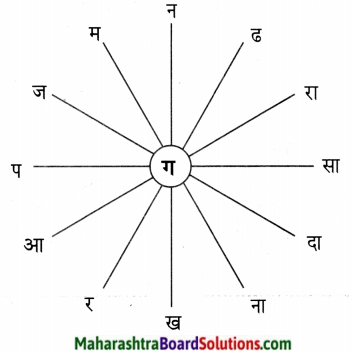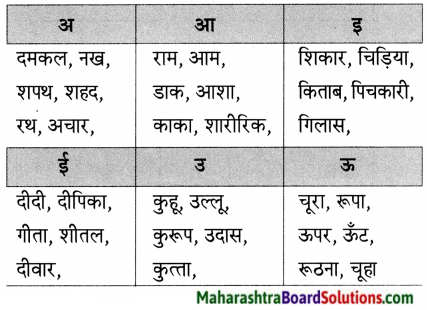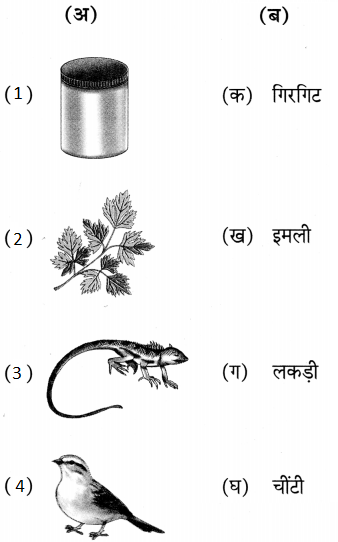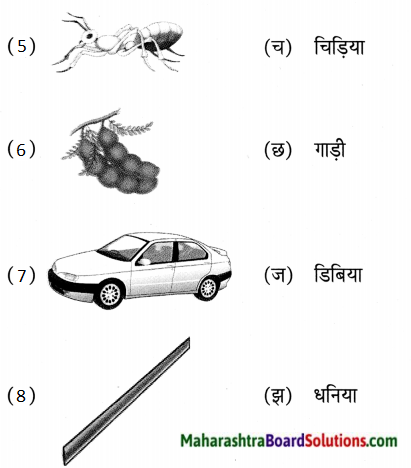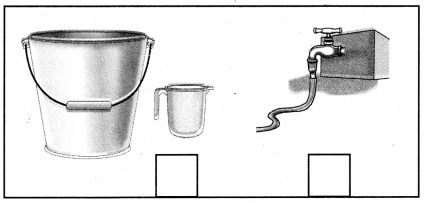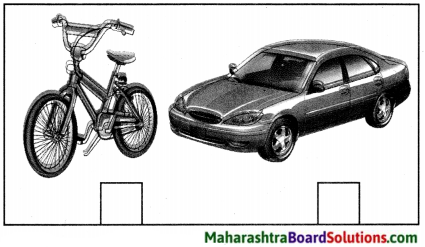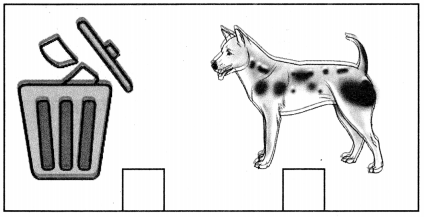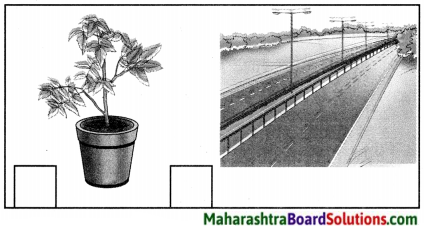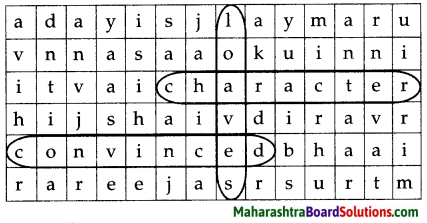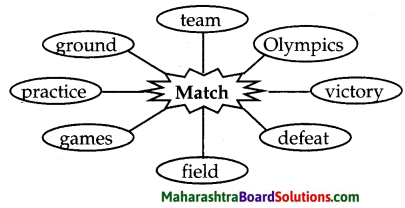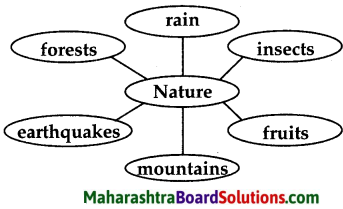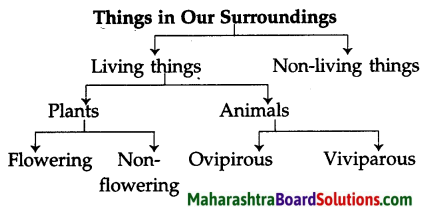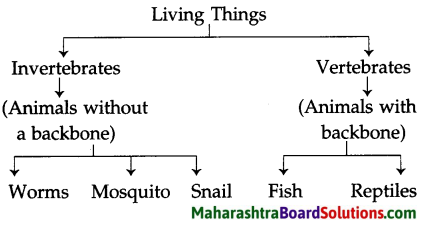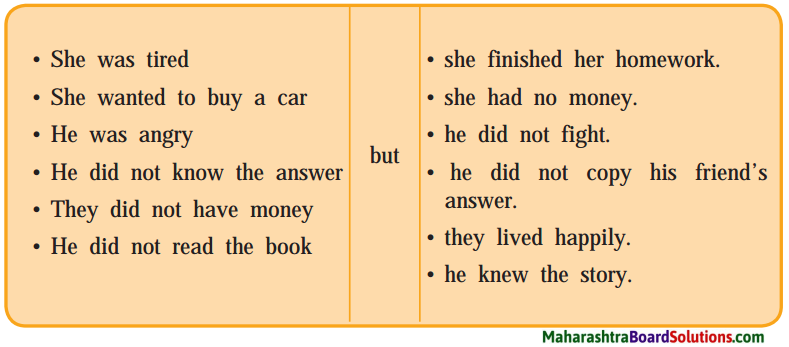Std 5 English Lesson No 5 The Twelve Months Question Answer Maharashtra Board
Balbharti Maharashtra State Board Class 5 English Solutions Chapter 5 The Twelve Months Notes, Textbook Exercise Important Questions and Answers.
5th Std English Poem The Twelve Months Question Answer
English Balbharati Std 5 Digest Chapter 5 The Twelve Months Textbook Questions and Answers
1. Find the meaning of the following words.
Question 1.
Find the meaning of the following words.
1. adorning
2. rated
3. abused
4. starlets
5. delicious
Answer:
1. adorning – decorating.
The Christmas tree was adorned with bells bows, stars and ribbons.
2. rated – scolded
Mother rated me for breaking the window.
3. abused – treated with cruelty
The Britishers abused the Indians during our freedom struggle.
4. starlets – flowers in the shape of stars.
The garden was filled with blue starlets
5. delicious – very tasty
Indian cuisine (cooking) is very delicious.

2. Read the words. Write the words that combine to make each of them.
Question 1.
Read the words. Write the words that combine to make each of them.
- stepmother
- footprint
- snowwhite
- springtime
- gentle-hearted
- anywhere
Answer:
- stepmother = step + mother
- footprint = foot + print
- snowwhite = snow + white
- springtime spring + time
- gentle-hearted = gentle + hearted
- anywhere = any + where
Now write other meaningful words that begin/end with –
the first word in each
the second word in each.
3. Answer the following questions.
Question 1.
Why did Marouckla’s stepmother hate her ?
Answer:
Marouckla’s stepmother hated her because she was prettier than her own daughter Holena.
Question 2.
In what season does the story take place ?
Answer:
The story takes place in the winter season.
Question 3.
Does Marouckla get any of the things she brings ?
Answer:
No, Marouckla did not get any of the things she brought. Her wicked stepmother and stepsister enjoyed them all by themselves.

Question 4.
Why do Holena and her mother go out in the snow themselves ?
Answer:
Holena and her mother went out in the snow themselves because they wanted more apples and they felt that Marouckla would eat up all the apples if they sent her to get them.
Question 5.
Why is Great January annoyed with Holena and her mother ?
Does he help them?
Answer:
Holena and her mother reached where the big fire was burning and the twelve months were sitting. They stepped up to the fire and stretched out their hands to warm them, without asking permission or speaking a polite word, instead they were very rude to them. This annoyed Great January. He did not help them, instead he swung the club over his head which made the snow fall thick and an icy wind began to blow because of which Holena and her mother were lost in it forever.

4. Describe the following with the help of the story.
Question 1.
Describe the following with the help of the story.
Springtime
Summer
Winter
Answer:
1. Springtime :
Answer:
During springtime which begins in March, the snow begins to melt, the trees begin to bud with fresh flowers. The frozen ground once again is covered with grass. Colourful flowers are seen. The temperature is warmer and it seems as if the earth has come back to life.
The season comes after winter.
2. Summer:
Answer:
During summer the temperature is very hot. It is hottest in June. The ground is covered with grass. The trees are covered with leaves and flowers. The birds and animals are very happy. We can hear the singing of birds. The forests are filled with all kinds of coloured flowers. Life seems wonderful.
3. Winter time:
Answer:
The coldest month is January. Snow falls thick covering the ground with deep snow. It becomes difficult for man to move outside the house. There are no flowers or fruits on the trees. Icy winds blow making one sit in front of the fire for warmth.

5. Group Work
Question 1.
Form groups of 3. Read aloud the conversations in the story, each group presenting one piece of conversation.
Question 2.
Form groups of 5. Find at least two fairy tales/folk tales each and share them with other members in your group. Make a collection of 10 different stories in each group.
6. Language Study (See pages 84 – 88.)
Note the words that are highlighted.
Marouckla ran to the top of the mountain where the big fire was burning. The highlighted words are all nouns. Find 5 other nouns from the story.
7. Activity
Hold a story-telling competition in which each one narrates a folk-tale or fairy-tale.

English Balbharati Std 5 Answers Chapter 5 The Twelve Months Additional Important Questions and Answers
Answer the following:
Question 1.
Where did the mother live with her two daughters?
Answer:
The mother lived in a faraway country with her two daughters.
Question 2.
What did Marouckla not know?
Answer:
Marouckla did not know how beautiful she was.

Question 3.
How did Marouckla spend her time?
Answer:
Marouckla spent her time doing all the housework, tidying up the cottage, cooking, washing, spinning, weaving and sewing.
Question 4.
How did Holena spend her time?
Answer:
Holena spent her time adorning herself and lazing about.
Question 5.
What did the mother and Holena decide to do with Marouckla?
Answer:
The mother and Holena decided to throw her out in the freezing cold to get rid of her.
Question 6.
What did Marouckla see when she reached the top of a mountain?
Answer:
When Marouckla reached the top of the mountain, she saw a big fire burning and twelve men sitting around it.

Question 9.
Describe the men Marouckla saw.
Answer:
Marouckla saw that three of them had snow white beard, three of them were not so old, and three were still younger. The three youngest men were the handsomest of them all.
Question 10.
Who were these twelve men?
Answer:
These twelve men were actually the twelve months.
Question 11.
Describe Great January.
Answer:
Great January sat highest of all, his hair and beard were as white as snow and he had a club in his hand.
Question 12.
Why was it not possible to get violets?
Answer:
It was not possible to get violets, because it was January and everything was covered with snow.

Question 13.
What would Holena and her mother do if Marouckla did not bring the violets?
Answer:
If Marouckla did not bring the violets, her sister and mother would kill her.
Question 14.
How did the violets look when they began to bloom?
Answer:
When the violets began to bloom they looked as though a blue cloth had been spread out on the ground.
Question 15.
When do we get strawberries in plenty?
Answer:
We get strawberries in plenty in the summer season.
Question 16.
How did the ripened strawberries look like?
Answer:
The ripened strawberries looked as though a red carpet had been spread on the ground.

Question 17.
What did Holena order Marouckla to get on the third day?
Answer:
Holena ordered Marouckla to go into the forest and get some red apples on the third day.
Question 18.
When do we get apples in plenty?
Answer:
We get apples in plenty in the autumn season.
Question 19.
How did Holena describe the apple to her mother?
Answer:
Holena told her mother that the apple was so delicious and she had never tasted anything so nice all her life.
Question 20.
What did Holena and her mother wrap themselves with, when they went out to get the apples?
Answer:
Holena and her mother wrapped themselves in fur coats and shawls before they went out into the forest.

Activities
Let us describe the following seasons.
Question 1.
Autumn time:
Answer:
The month of September sees faded and dry leaves fall on the ground. This happens because of the blowing of cold wind. This season comes before winter. It is also known as the ‘season of fall’ because we have trees shedding off their leaves. We get pumpkin and apples in plenty in this season.
Question 2.
Can you name some more fairy tales you have read or heard?
Answer:
Cindrella, Snow-white and the Seven Dwarfs, The Woodcutter and the Fairy, Snow-white and Rose-Red, Red Riding Hood, Beast and the Beauty, Hansel and Gretel, Goldilocks and the Three Bears, the sleeping Beauty, Rapunzel, etc.

Language Study
Question 1.
Find the meanings of the following words and frame sentences of your own:
Answer:
1. wrapped – covered
I wrapped the gift with a glitter paper.
2. bade – commanded
Mother bade us to complete our studies before going to play.
3. club – a heavy stick
The Stone Age man used clubs as weapons before they invented metal weapons. cross-angry My teacher was cross with me for not completing my work on time.
4. terror – fright, fear
The terrorist attack created terror in the minds of little children.
Question 3.
Write the words that combine to make each of the following
Answer:
- stepdaughter = step + daughter
- without = with + out
- faraway = far + away
- housework = house + work
- joyfully = joy + fully

Question 4.
Look at the underlined words in the sentence.
Answer:
e.g. Marouckla ran to the top of the mountain where the big fire was burning. These underlined words are known as nouns.
Question 5.
Pick out the nouns in the sentence. Write whether they are common or Proper nouns.
- There are mangoes on the tree.
- Sita is a clever girl.
- India is a democratic country.
- The flowers in the garden are beautiful.
- Ants are industrious creatures.
Answer:
- mangoes, tree – Common noun
- Sita – Proper noun, girl – Common noun
- India – Proper noun, country – Common noun
- flowers, garden – Common noun
- ants, creatures – Common noun

Do as directed
Question 1.
- The fisherman caught a lot of fish. (Pick out the compound word)
- I am looking for red apples. (Pick out the helping verb and the main verb)
- It looked as though a red carpet had been spread. (Pick qut the adjective)
- The stepmother caught hold of Marouckla. (Pick out the verb and state its tense)
- I am looking for strawberries. (Pick out the phrase from the sentence)
- The ………………witch was put to death. (Fill with an adjective)
- Give words related to season.
- ………..child ran for ……………….. hour to maintain his record. (Fill in with articles)
- They ………. happy about the result. (Fill in with the correct form of the verb – was/am/were)
- Her.. ………… pleased the people. (Fill in with a noun)
Answer:
- isherman
- am – helping verb, looking – main verb
- red – adjective
- caught – past tense
- looking for-phrase
- wicked
- weather, climate, rainy, summer, winter
- The, an
- were
- kindness / gentleness/smartness / cleverness

Question 2.
Give the antonyms of:
- hated
- beautiful
- impossible
- deep
- youngest
- silent
- everything
- covered
- quickly
- joyfully
- filled
- obeyed
- harshly
- agreed
- wrapped
Answer:
- oved
- ugly
- possible
- shallow
- oldest, eldest
- noisy
- nothing
- uncovered
- slowly
- sadly
- emptied
- disobeyed
- politely
- disagreed
- unwrapped
Question 3.
Pick out some nouns from the story and write whether they are common nouns or proper nouns.
Answer:
1. Proper noun – Holena, January
2. Common noun – country, forest, snow, footprint, months
Reading Skills, Vocabulary and Grammar
Read the following passage and answer the questions given below:
Question 1.
Who lived in a faraway country?
Answer:
A mother and her two daughters lived in a faraway country.

Question 2.
What were the names of the daughters?
Answer:
The names of the daughters were Holena and Marouckla
Question 3.
Who was prettier of the two daughters?
Answer:
Marouckla was prettier of the two daughters.
Question 4.
What kind of a girl was Marouckla?
Answer:
Marouckla was a gentle-hearted girl
Question 5.
Why was mother always cross with Marouckla?
Answer:
Mother was always cross with Marouckla because she was her stepdaughter and was prettier than the own daughter.

Question 6.
One was her own child and one was her stepdaughter. (Pick out the nouns from the sentence)
Answer:
Nouns – child, stepdaughter
Question 7.
Mother was always cross with her. (Separate the subject and predicate)
Answer:
Subject – Mother
Predicate – was always cross with her.
Question 8.
How would you react if someone behaved rudely with you?
Answer:
If someone behaved rudely with me I would try to find out the reason for such rudeness. If I am at fault, I will try to correct myself. If I am not at fault, I will make the person realize that he/she is behaving rude with me for no fault of mine. I will also let him/her know that being rude is not good at all.

Writing Skills :
Question 1.
Write on the season you like the most.
Answer:
The Season I like the most. There are three seasons in India. We have the winter season, summer season and the rainy season.. I like all these seasons but the season I like the most is the rainy season.
I like the fragrance of the wet mud when it first rains. I love to walk in the rain allowing the drops to fall on my palms. Everywhere there is greenery. The plants and leaves look clean and green. The roads also look very clean.
I love to stand at my window on a rainy day and watch the rain. I love it more because mummy makes hot crispy snacks which I enjoy eating while looking out at the rain.
There are times when it rains so heavily that the school remains closed. During such days I enjoy making paper-boats and merrily watch as it moves smoothly on the water. All these things which I can do make this season the best season for me.

The Twelve Months Summary in English
Summary :
The story The Twelve Months’ is a Russian tale. The story brings out an easy way of remembering the months, the seasons of the year, the climate, weather and vegetation related to the seasons.
The story revolves around a mother with two daughters, one her own named Holena and the other her stepdaughter named Marouckla who is a kind-hearted, hard working and beautiful. The mother makes her work throughout the day which she does happily.
The mother and her daughter are very much jealous of Marouckla’s beauty and they want her out of their lives. She is threatened and sent out in the freezing cold to get fruits and flowers which do not grow in winter.
She is lucky to meet twelve men who are actually the twelve months. They help her out every time she is in trouble and eventually put an end to the wicked mother and daughter. The story ends with Marouckla living a happy life. The story also highlights that good always triumphs over evil.

Meanings :
- faraway (adj) – distant
- stepdaughter (n) – a daughter of one’s husband or wife by previous marriage
- gentle-hearted (adj) – kind-hearted
- cross (adj) – very angry
- adorning (u) – decorating
- abused (v) – to treat with cruelty
- rated (w) – scolded
- envied (o) – jealous
- slammed (v) – to shut with force, making a loud sound
- torture (o) – to inflict pain
- club (n) – a heavy stick used as a weapon
- terror (n) – fright, fear
- blazed (v) – to shine
- scampered (o) – a quick, light run
- merrily (adv) – happily
- sulkily (adu) – to express anger by remaining silent
- snatched (u) – to pull out something without permission
- bade (v) – commanded
- starlets (n) – white flowers
- starry (adj) – looking like stars
- blossom (n) – a flower which would turn into a fruit
- delicious (adj) – very tasty
- ragged (adj) – dressed in rags.
- wretch (n) – an unpleasant, annoying person
- wrapped (o) – completely covered
- inherited (v) – to receive property legally
Balbharti English Textbook Std 5 Pdf Free Download Unit 1
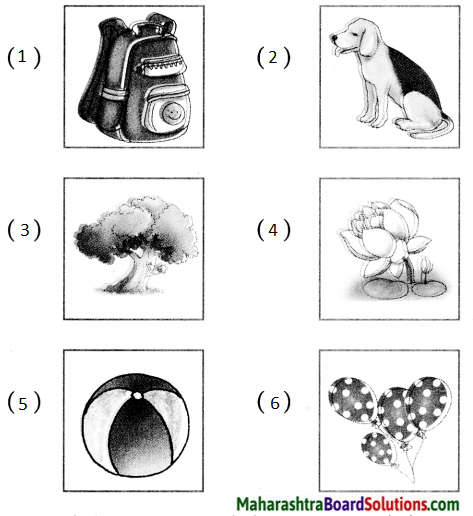
![]()
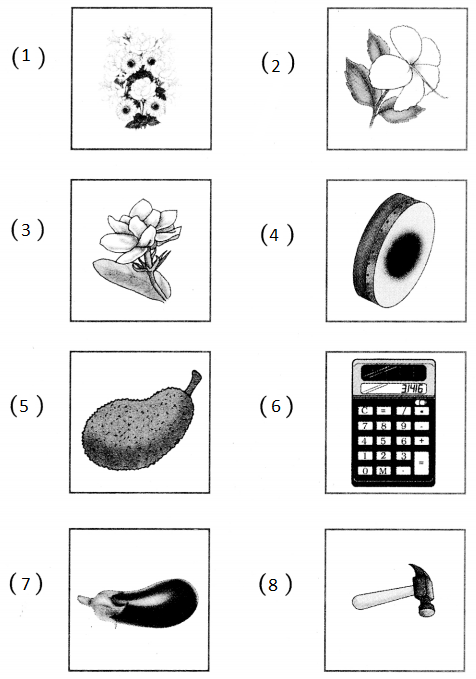
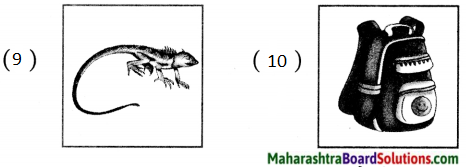
![]()
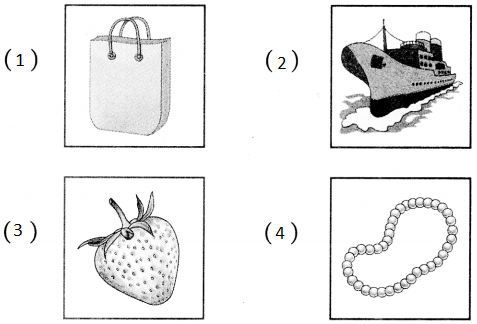
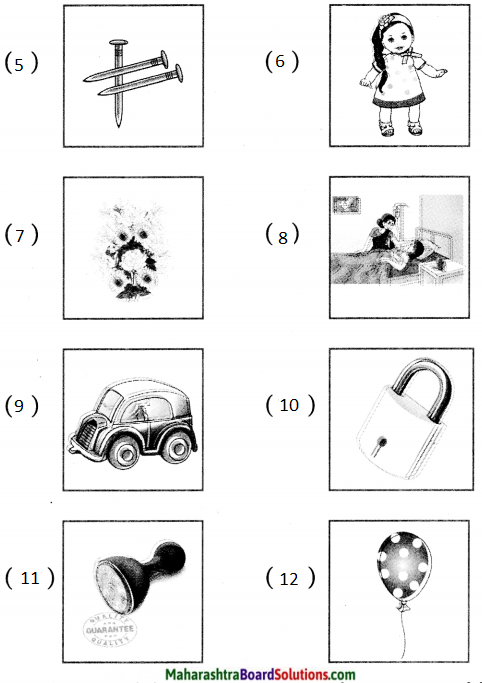
![]()
![]()





